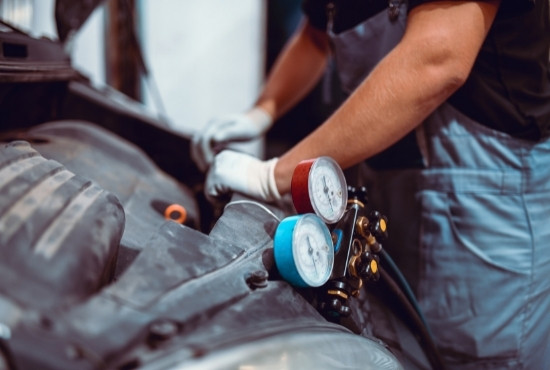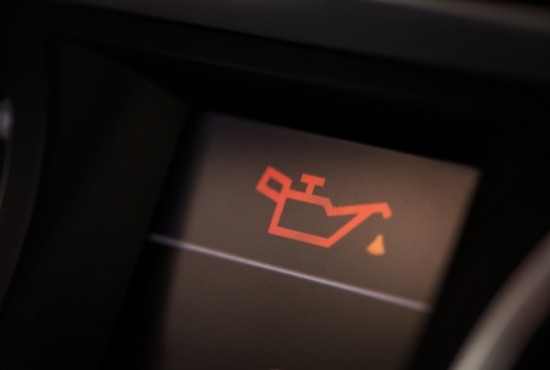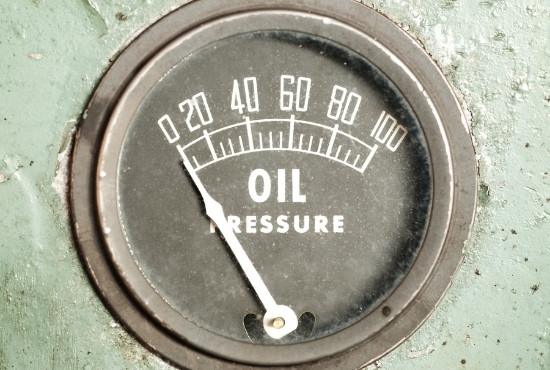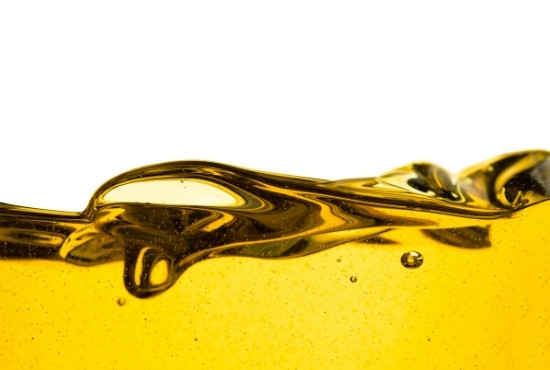Table of Contents

Driving With Bad Oil Pressure Sensor
Driving with bad oil pressure sensor can be a nerve-wracking experience, as it leaves you clueless about the health of your engine.
As one of the most vital components in ensuring smooth functioning, the oil pressure sensor is responsible for monitoring the oil level and pressure within your vehicle’s engine.
When this sensor fails to work properly, it can lead to a host of issues such as:
- Loss of Power
- Engine Overheating Issues
- Low Oil Levels
- Engine Noise
- Potential damage to your engine.
In this article, we will delve into why driving with bad oil pressure sensors is fatal, and low oil pressure symptoms, and provide valuable insights on how to fix oil pressure sensors.
What Eats Car Paint the Fastest? 26 Jaw-dropping Substances
What Does the Oil Pressure Sensor Do?
The oil pressure sensor is a vital component in an engine’s lubrication system, responsible for monitoring and conveying information about the oil pressure level to the vehicle’s onboard computer.
But let’s dig deeper into its importance. In addition to monitoring the oil pressure levels, the oil pressure sensor functions as a guardian angel for the engine.
When the sensor detects insufficient oil pressure, it immediately transmits a signal to the onboard computer, which then activates dashboard warning lights.
This feature allows for prompt intervention, therefore decreasing the risk of severe engine malfunction or long-term harm.
So, the next time you jump into your car and observe its slick performance, take a few seconds to appreciate all that is made doable by this seemingly small but significant device – the ever-vigilant oil pressure sensor!

What Happens When the Oil Pressure Sensor Goes Bad?
If your oil pressure goes below a specific level, your oil pressure sensor will sound an alarm and display visible warning indications such as a flashing light and a beep.
The computer won’t be able to provide accurate readings because of a faulty oil sensor.
- Blown Seals
- Chipped Heads
- Fire
- Rattling or Knocking Sounds
Are all possibilities in such a situation.
The cost of restoring such damage is substantial, which is why routine maintenance is critical.
Always be on the lookout for indicators of a faulty oil pressure sensor. You must resolve any of these concerns as soon as you notice them.
If you are unable to do it yourself, you can seek professional assistance.
Before we look into the signs of bad oil pressure sensor, you need to know how to check oil pressure.
How Long Can You Drive a Car With a Bad Speed Sensor in 2022

How to Check Oil Pressure?
A faulty oil pressure sensor could be to blame if you, as a driver, experience a rapid loss of power despite maintaining the same engine RPMs. Inspecting the oil pressure in your engine is important for safety and performance reasons.
To check the oil pressure in your engine, all you need is a basic oil pressure gauge. The gauge should be checked every time the car is serviced to see if there are any engine problems.
You may also check the oil pressure without a gauge by feeling for leaks or scrutinizing the dipstick for evidence of leaking engine fluids.
When the oil pressure sensor fails, a light will illuminate and a warning message will show.
Signs of Bad Oil Pressure Sensor:
If you’re experiencing any of the following bad oil pressure sensor symptoms, you may have got a bad oil pressure sensor:

Oil Pressure Light (Blinking continuously):
The oil pressure light on your car’s dashboard means the oil level in the engine is low. When the light is on, you should manually check the oil level.
If the level is good and your car is running fine, the problem is a faulty oil pressure sensor. This sensor gives incorrect readings, causing the oil pressure light to turn on.
In this case, the best solution is to replace the faulty sensor to reduce concerns about oil levels.
Similarly, if the oil pressure light is continuously blinking, you should check the oil level in the engine. If the oil is at the right level, again it means your car has a faulty oil pressure sensor.
In any case, if there is a low oil level in the engine, top it up to the optimum level. This will cause the light to disappear. In this case, you don’t have a bad oil sensor; instead, you need to look for other signs of leakage and burning of oil in the engine.
But if the oil levels are normal but you hear:
- Unusual Ticking
- Grinding
- Other noises from your engine
you may have a faulty oil pump. In this scenario, replace the oil pump and sensor to get accurate readings down the road.

The Oil Pressure Gauge Shows the Wrong Reading:
You may face this problem if you are driving an old car. Old cars used to have mechanical oil pressure gauges. Oil pressure gauges ensure that the engine has enough oil to run correctly.
When there is too little pressure, it may cause a machine to malfunction and produce excess heat. That extra heat can lead to excessive wear and tear on the parts.
The longer this happens, the more likely it becomes that the engine could be permanently damaged.
Just like we did above, you need to check the oil levels manually. If the dipstick shows enough oil level, yet the gauge is constantly showing zero or too high, a bad oil sensor is blamed.

Warning Light:
The engine warning light is a silent reminder indicator that can either show an error or alert that your car has a potential problem.
The warning light may come on for many issues, but it typically comes on when there is a low oil level.
Check the oil level manually; if the dipstick shows the correct levels, your car has got a bad oil pressure sensor, which is why it shows an inaccurate reading.

Engine Overheating Issues:
Have you ever experienced your car’s engine overheating out of nowhere? If so, one possible culprit to blame is a faulty oil pressure sensor.
If you notice your engine overheating on a regular basis for no obvious reason, such as coolant leaking or radiator problems, don’t dismiss the possibility of a faulty oil pressure sensor.
Addressing this issue early on can save you not just money on repairs, but also dangerous situations on the road caused by unexpected breakdowns or fires produced by an overheated engine.

Low Oil Levels:
The oil ensures that everything is lubricated and spinning efficiently, extending the engine’s life and ensuring that your vehicle operates properly. Therefore, you must examine the car’s oil level more frequently. An insufficient oil level can be hazardous to your vehicle’s health.
If the dipstick indicates a low oil level but the oil pressure indicator did not illuminate, the oil pressure sensor is faulty and was unable to alert you in a timely manner.
Replace the sensor as soon as possible, as driving with a faulty oil pressure sensor can cause irreparable damage in the future.
Engine Noise:
The noise an engine makes can be a sign of many different problems. Some sounds indicate a mechanical problem, whereas others result from normal wear and strain.
Engine noise is often associated with low pressure because low lubricant levels can cause metal parts to rub against each other, causing friction and a louder-than-usual engine.
These range from:
- Ticking
- Knocking
- Grinding
- Clunking Noise
In any of the noise, get your car inspected by a professional. The damage could be more significant than what you have thought.
Drop-in Engine Performance:
The drop in engine performance you’re experiencing is usually the result of oil pressure low.
The engine cannot correctly lubricate itself at high RPMs when its designed-in oil pressure is insufficient to deliver enough oil to the moving parts.
Due to increased friction between components, the engine has to work harder, which results in a decline in engine performance.
It would be best to address the oil pressure low immediately to prevent further damage.
These are a few of the bad oil pressure sensor symptoms. Always keep an eye on the signs and take sudden action in case any of them appears.

Cause of Oil Pressure Low:
A variety of reasons can cause oil pressure low, but these are the most common.
Low Oil Level in The Engine:
A car’s engine needs oil to function correctly. If you don’t change the oil in your vehicle, it will eventually get too low, and the pressure of the oil will decrease, causing many different problems for your engine.
Over time, there can be:
- Some Leaks
- Poor Performance
- Engine Failure
if you don’t care for the car.
So, if your car is low on engine oil, it will cause low oil pressure in the vehicle.
Inappropriate Oil Viscosity:
The viscosity of an oil is determined by its density and consistency. The correct oil viscosity will provide the engine with:
- Sufficient Lubrication
- Cooling
- Abrasion Protection
In order for it to operate effectively and last longer.
Every engine has its own viscosity specifications. Using a viscosity of oil other than what is recommended is one of the causes of insufficient oil pressure.
Please consult your owner’s manual to determine the correct viscosity of fuel for your engine and adhere to it.
Engine Wear:
Many drivers are not aware that engine wear can lead to low pressure. As the engine wears, some of the metal might rub against the engine.
This creates metal-on-metal contact, which will wear down over time and cause an uneven pressure distribution on the bearings. The oil pressure will drop as a result of this metal scraping.
If your oil pressure is dropping unexpectedly, you should have your car checked by a mechanic before it gets worse- low oil pressure can lead to engine catastrophes.
Pump Wear:
A car is a machine that requires a number of distinct parts to operate. The oil pump, which delivers oil to all engine moving elements, is one of the engine’s most vital components.
A malfunctioning oil pump prevents oil from reaching various engine components, resulting in insufficient oil pressure. With time and improper upkeep, oil pumps become susceptible to leaking. Consider replacing the oil pump as a precaution.
These are some of the most common causes of low pressure; keep a watch on the symptoms and causes of low oil pressure. Take immediate action if you observe any of the above.
Now let’s have a look at how to fix oil pressure sensor:

How To Fix Oil Pressure Sensor?
Now that we understand the side effects of driving with bad oil pressure sensors and bad oil pressure sensor symptoms, you must know how to fix oil pressure sensor.
Step-1) Locate A Bad Oil Sensor:
The oil pressure sensor is located at the cylinder heads or in the engine compartment. As there is no universal location, the location may vary in your case.
Kindly consult the user manual to find the exact location or search it on Google by your model name and year.
Step-2) Unplug and Remove the Bad Oil Pressure Sensor:
Once you locate the bad oil pressure sensor, unplug the connector and pull it out of the sensor by releasing the retaining tab.
Over time debris may end up building around the sensor. Clean the debris before pulling out the connector.
After you pull out the connector, use a wrench or socket and unscrew the sensor.
Step-3) Find a Replacement, Install and Re-Apply the Connector:
Compare the old bad oil sensor with a new one. Make sure that they both have the same size, thread pitch, and threads-in in the same diameter.
Once you finalize the replacement sensor, install and re-screw the new one using the wrench or a socket and re-apply the connector.
Step-4) Check If It is Working:
Start the engine and wait for 5 to 10 seconds. The oil pressure light will disappear. Even after some time, the light doesn’t fade, switch off the car immediately and consult a professional. The issue is more significant than what we have thought.
What To Do If You Have a Bad Oil Pressure Sensor?
With a malfunctioning oil pressure sensor, driving can be quite dangerous, as we have already explained. However, if this occurs, you have two options:
One option is to change the sensor:
On Amazon, you may buy a compatible oil pressure sensor, or you can bring your own to an auto parts store and then have experts check it out. Otherwise, you’ll need to get your car into the shop as soon as possible for an inspection.
Make sure you’re safe behind the wheel:
Check for oil leaks promptly if you notice that your car’s engine is running short on oil. If you’re traveling at a safe speed, don’t go too fast or rev your engine.
How Much Does It Cost To Replace A Bad Oil Pressure Sensor?
The price of an oil pressure sensor replacement varies by car make and model, but it shouldn’t be too expensive. Check out the goods listed below or type in the model number to find it.
Oil pressure sensors may be purchased for as low as $10, and replacing them yourself is a simple task.
However, taking your car to a professional may cost you between $50 and $250 depending on the facility where you get your vehicle serviced.
Q: Is it safe to drive with a bad oil pressure sensor?
Ans: No. A defective oil pressure sensor is extremely hazardous and must be avoided at all costs. Even if nothing is amiss with your vehicle, the check engine light will frequently illuminate.
Alternately, it may fail to warn you when your engine is perilously low on oil, leading to engine failure.
Conclusion:
If you are experiencing any of the symptoms of a bad oil pressure sensor, it is best to take your car in for repair as soon as possible.
Not only is this a potentially dangerous problem, but it can also cause extensive damage to your car if left untreated. So be sure to keep an eye on your oil pressure and get it fixed if needed.
You can always fix the bad oil pressure sensor yourself, if you are not comfortable better let an expert handle the situation.
They can determine if the sensor needs to be changed or if there is an issue with it. This will save you from spending more money in the future when something worse could happen.




























































18 thoughts on “Driving With Bad Oil Pressure Sensor | Ultimate Recipe for Disaster in 2023? Flawless Car Guide”